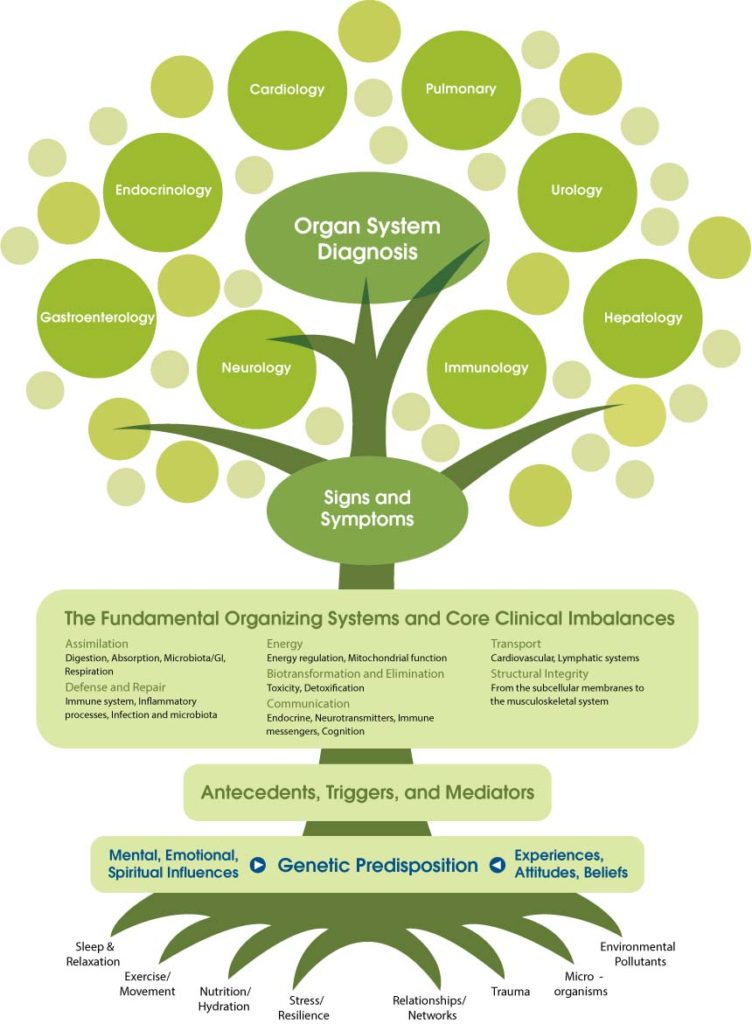How is Lifestyle Medicine Different?

Article & Photo Credit: The Institute for Functional Medicine
The illustration left uses a tree to visually represent the core aspects of the Lifestyle Medical paradigm and highlights the difference between conventional healthcare and Lifestyle Medicine. In order to keep a tree healthy and allow it to flourish, the most basic and essential elements must be supported. If a tree is not healthy, the first place you should look for answers are at the foundational elements, that is, the roots and the soil. Lifestyle Medicine applies the same approach to patients.
The most important factors, and the ones I examine first when gathering information about a patient, are the foundational lifestyle factors: sleep, exercise, nutrition, stress levels, relationships, and genetics. These are the roots and soil, which are, in turn, influenced by specific predisposing factors (antecedents), discrete events (triggers), and ongoing physiological processes (mediators), which may then result in fundamental imbalances at the trunk. These imbalances can eventually result in the signs and symptoms that are grouped into a diagnosable constellation that we call disease, represented by the branches and leaves.
Conventional healthcare tends to look at the constellation of symptoms first (the branches and leaves), which usually results in a disease diagnosis. Often, this diagnosis is associated with a drug or drugs that can be prescribed to treat this constellation of symptoms, and that is the end of the story. But this approach neglects the more fundamental aspects of health that reside in the roots and the trunk of the tree. It treats all patients presenting similar symptoms in the same way and completely neglects both the inherent differences among patients as well as the myriad possible causes that a “disease” can have.
With that said, Lifestyle Medicine does not replace your primary medical practitioner. In fact, I require all of my patients to be under the care of a primary medical physician. Coordinated care with your physician is very important. As your health improves your primary care physician may reduce or eliminate some of prescribed medications.
Lifestyle Medicine Approach to Treatment

Prevention is paramount. Virtually every complex chronic health problem is preceded by long-term disturbances in function that can be identified and effectively managed. Treatments may include botanical nutraceuticals, nutritional supplements, therapeutic diets, and stress management techniques. This patient-centered approach allows you, the patient, to become an active partner in your healthcare. It puts you in charge of improving your health thereby changing the outcome of health issues.
Lifestyle Medicine identifies health as a positive vitality, not merely the absence of disease, emphasizing those factors that encourage the enhancement of a vigorous life. The patient-centered approach is respectful of, and responsive to, individual patient preferences, needs, and values. It ensures that patient values guide all clinical decisions. The power of this therapeutic partnership comes from the idea that patients who are active participants in the development of the therapeutic plan feel more comfortable, in control of their own well-being, and are more likely to make sustained lifestyle changes to improve their health.
